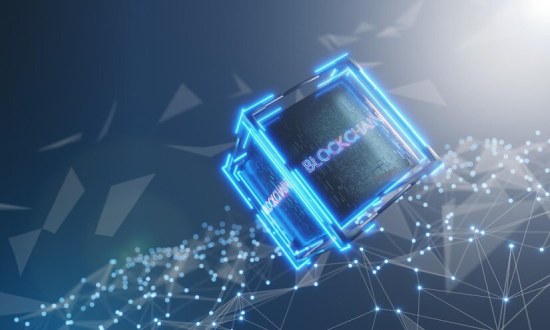-
The Sui blockchain has emerged as one of the most innovative platforms for decentralized app development, built to tackle scalability, efficiency, and developer-friendly functionality. In this comprehensive guide, we explore every crucial aspect of Sui blockchain development, from its architecture and consensus mechanism to its smart contract framework, security features, and growing ecosystem. For businesses and teams looking to build on Sui, partnering with a specialized Sui blockchain development company can unlock faster deployment and expert support. Whether you are a developer, researcher, or blockchain enthusiast, this article offers a deep technical dive into the world of Sui.
Introduction
Blockchain technology has come a long way since its inception, and Sui is part of the new generation of blockchains that aim to overcome the limitations of earlier systems. Developed by Mysten Labs, Sui focuses on high throughput, low latency, and a scalable architecture. Its design is optimized for fast and secure transactions, making it well-suited for decentralized applications (dApps) that require both speed and reliability.
Background of Sui Blockchain
Sui is developed with the intent to address two key challenges in the blockchain industry: scalability and usability. As decentralized applications evolve, traditional blockchains face bottlenecks in transaction throughput and high latency. Sui's architecture is specifically designed to overcome these issues through innovative data structures and consensus protocols.
Originally conceptualized to enable real-world applications with high performance and minimal fees, Sui draws inspiration from earlier blockchains while introducing significant improvements. It uses advanced cryptographic techniques, object-centric data models, and parallel execution to create a robust environment for both developers and end-users.
Also, Read | Solana Based NFT Marketplace Development: An Extensive Guide
Core Architecture and Consensus Mechanism
Object-Centric Data Model
Unlike traditional blockchain systems that use account-based models, Sui employs an object-centric data model. This model treats every asset as a distinct, mutable object that can be owned, transferred, or modified independently. Such an approach improves scalability by allowing for parallel processing of transactions that affect different objects concurrently.
Key advantages of the object-centric approach include:
- Parallel Execution: Transactions that affect non-overlapping objects can be processed in parallel, reducing bottlenecks.
- Fine-Grained State Management: Developers can work with discrete objects, leading to better optimization and resource utilization.
- Enhanced Security: Isolated objects reduce the risk of cascading failures, as a fault in one object does not necessarily affect others.
Consensus Protocol
Sui's consensus mechanism is designed to be both fast and secure. It utilizes a combination of techniques tailored to handle the object-centric data model efficiently:
- Byzantine Fault Tolerance (BFT): Sui integrates a Byzantine Fault Tolerant consensus mechanism to ensure that the network remains secure and operational even if some nodes act maliciously or fail.
- Asynchronous Processing: To facilitate rapid confirmation of transactions, Sui allows asynchronous processing of independent transactions, thereby improving overall throughput.
- Scalability through Sharding: Although not sharding in the traditional sense, Sui's architecture allows for horizontal scaling by partitioning the state space into independently manageable objects.
The consensus mechanism is optimized to resolve conflicts and ensure data consistency, even when multiple transactions interact with the same object. This is achieved through rigorous validation rules and conflict resolution strategies that are built into the protocol.
Also, Check | Ethereum Distributed Validator Technology | DVT for Staking
Key Features and Innovations
Sui distinguishes itself from other blockchains through several innovative features:
High Throughput and Low Latency
By enabling parallel transaction execution and optimizing consensus processes, Sui achieves a significant boost in throughput. This is critical for applications that require high-speed processing, such as decentralized finance (DeFi), gaming, and supply chain management.
Efficient Transaction Processing
The object-centric model allows Sui to process transactions more efficiently. Since only the affected objects are locked or updated during a transaction, many transactions can proceed simultaneously without interference.
Developer-Friendly Environment
Sui is designed with developers in mind. The platform provides a comprehensive set of tools, libraries, and documentation that simplify the process of writing, testing, and deploying smart contracts. Additionally, the language support and developer SDKs are tailored to reduce friction in the development process.
Modular and Extensible Design
The architecture of Sui is modular, allowing for future upgrades and extensions without disrupting the existing network. This ensures that Sui can adapt to new technological advancements and evolving market demands.
Security and Fault Tolerance
Security is a cornerstone of Sui's design. The blockchain incorporates robust cryptographic protocols and a resilient consensus mechanism to safeguard against attacks. The object-centric approach further enhances security by isolating state changes and minimizing systemic risk.
Smart Contracts and Programming Model
The Move Programming Language
At the heart of Sui's smart contract development is Move, a programming language initially developed for the Libra (now Diem) project by Facebook. Move is designed to provide a safe and flexible environment for writing smart contracts. Its features include:
- Resource-Oriented Programming: Move enforces strict rules for resource management, ensuring that assets are handled securely and predictably.
- Formal Verification: Move's design allows for formal verification, which helps in proving the correctness of smart contracts and reducing the risk of bugs.
- Modularity and Reusability: Contracts written in Move are modular, making it easier for developers to reuse code and build complex systems.
Smart Contract Lifecycle
Developing on Sui involves several stages:
- Development: Using Move, developers write smart contracts and test them in local environments. The language's syntax and semantics are designed to minimize common programming errors.
- Compilation: The Move compiler checks for safety and correctness, transforming the human-readable code into bytecode that can be executed on the Sui Virtual Machine (SuiVM).
- Deployment: Once compiled, smart contracts are deployed onto the Sui blockchain. The object-centric model ensures that the state associated with each contract is isolated, which improves security and performance.
- Execution: When a smart contract is invoked, the SuiVM handles its execution in a manner that optimizes for parallel processing and conflict resolution.
Developer Tools and Ecosystem
Sui offers a rich ecosystem of tools that facilitate development:
- SDKs and Libraries: Comprehensive software development kits (SDKs) are available for multiple programming languages, enabling seamless integration with the Sui blockchain.
- Test Networks: Sui provides test networks where developers can deploy and test their contracts without incurring real-world costs.
- Documentation and Tutorials: Detailed documentation, guides, and tutorials help developers get started quickly and deepen their understanding of the platform.
- Community Support: An active community of developers and contributors offers support and collaboration opportunities, further enhancing the development experience.
Also, Explore | Understanding Cosmos IBC for Cross-Chain Communication
Sui's Data Model and Execution Environment
Object-Based State Management
Sui's state is organized into discrete objects, each with its own properties and lifecycle. This granular approach to state management allows for better scalability and conflict resolution. The state of each object is independently verifiable and modifiable, which reduces the complexity of managing global state across the network.
Parallel Transaction Processing
One of the most innovative aspects of Sui is its ability to process transactions in parallel. When transactions affect different objects, they can be executed concurrently, vastly improving throughput and reducing confirmation times. This design is particularly beneficial for dApps with high transaction volumes.
Sui Virtual Machine (SuiVM)
The Sui Virtual Machine is the execution environment for smart contracts on the Sui blockchain. It is optimized for the Move language and supports efficient, parallel execution of smart contracts. Key features include:
- Isolation: Each contract execution is isolated, preventing unintended interference between concurrently running transactions.
- Determinism: SuiVM ensures that transactions produce the same results regardless of the order of execution, as long as they do not conflict.
- Resource Management: The VM efficiently tracks and manages resources, ensuring that contracts operate within defined limits and reducing the risk of runaway computations.
Conflict Resolution Mechanisms
Given the potential for parallel execution, conflict resolution is critical in Sui's architecture. The blockchain employs a set of rules and mechanisms to handle conflicts when two transactions attempt to modify the same object simultaneously. These mechanisms ensure that:
- Consistency is maintained: The final state of each object remains consistent across the network.
- Fairness is preserved: No single transaction or group of transactions can monopolize the state.
- Performance is optimized: By minimizing lock contention and using efficient validation methods, Sui maintains high throughput even under heavy load.
Security, Scalability, and Performance
Security Considerations
Security in blockchain systems is paramount, and Sui incorporates several layers of protection:
- Cryptographic Security: Advanced cryptographic techniques protect data integrity and user privacy. This includes the use of digital signatures, hashing algorithms, and secure key management.
- Consensus Resilience: The BFT consensus protocol ensures that the network can withstand up to a certain percentage of malicious nodes without compromising overall security.
- Smart Contract Auditing: Move's design encourages formal verification and thorough auditing of smart contracts. This reduces vulnerabilities and helps prevent exploits.
- Object Isolation: By isolating state changes to individual objects, Sui limits the potential impact of a compromised contract or faulty transaction.
Scalability Features
Sui's architecture is built with scalability in mind:
- Parallel Processing: The ability to execute transactions concurrently on independent objects dramatically increases throughput.
- Efficient State Management: The object-centric model reduces the overhead associated with global state changes, allowing the network to scale without significant performance degradation.
- Horizontal Scalability: As more nodes join the network, the system can distribute workload more evenly, improving overall performance and resilience.
Performance Metrics
Early benchmarks of Sui have shown promising results in terms of transaction processing speeds and latency. Key performance metrics include:
- Transaction Throughput: Sui's design allows for a high number of transactions per second (TPS), making it competitive with other high-performance blockchains.
- Confirmation Times: The consensus mechanism and parallel execution contribute to faster transaction confirmations, which is critical for user experience in time-sensitive applications.
- Resource Utilization: Optimized smart contract execution and state management ensure efficient use of computational resources, reducing operational costs and environmental impact.
You may also like | Revolutionizing DApp development with EIP-7702
Development Tools and Ecosystem
Integrated Development Environment (IDE) Support
Developers working with Sui benefit from extensive IDE support. Popular code editors like Visual Studio Code have plugins and extensions tailored for Move programming, providing syntax highlighting, debugging tools, and integration with the Sui toolchain. This greatly enhances productivity and reduces the learning curve for new developers.
Software Development Kits (SDKs)
Sui offers SDKs for multiple programming languages, which simplify interaction with the blockchain. These SDKs provide functionalities such as:
- Transaction Construction: Build, sign, and submit transactions to the Sui network.
- State Queries: Efficiently retrieve and analyze the state of objects on the blockchain.
- Event Handling: Set up listeners and handle events triggered by smart contract executions.
Testing and Simulation Environments
Before deploying applications on the mainnet, developers can test their contracts on Sui's test networks. These environments mimic the conditions of the live network, allowing for thorough testing without financial risk. Simulation tools also help in understanding how smart contracts behave under various scenarios, ensuring robustness and reliability.
Community and Developer Resources
A vibrant and active community is crucial for any blockchain ecosystem. Sui boasts an engaged developer community, regular hackathons, and extensive documentation. Key resources include:
- Official Documentation: Detailed guides covering everything from setting up a development environment to advanced smart contract design.
- Tutorials and Webinars: Regularly scheduled sessions help developers stay up-to-date with the latest best practices and features.
- Community Forums and Chat Groups: Platforms such as Discord, Telegram, and GitHub foster collaboration and support among developers.
Use Cases and Applications
Sui's high-performance, secure, and scalable design makes it an attractive option for a wide range of applications. Here are some notable use cases:
Decentralized Finance (DeFi)
DeFi is one of the most promising sectors for blockchain technology, and Sui's efficiency is ideal for DeFi applications that require high throughput and low latency. Use cases include:
- Decentralized Exchanges (DEXs): High-frequency trading and liquidity management can benefit from Sui's rapid transaction processing.
- Lending and Borrowing Platforms: Smart contracts can automate and secure lending operations, reducing risk and improving efficiency.
- Stablecoins: The efficient state management of Sui is well-suited for stablecoin ecosystems that require robust handling of large volumes of transactions.
Non-Fungible Tokens (NFTs) and Digital Art
The NFT space demands platforms that can handle unique asset management and high volumes of transactions. Sui's object-centric model is perfect for:
- Minting and Trading NFTs: Efficient and secure handling of unique tokens.
- Digital Art Platforms: Enabling artists to manage royalties and provenance data seamlessly.
Gaming and Virtual Worlds
Blockchain gaming and metaverse projects require both speed and security. Sui's architecture supports:
- In-Game Economies: Fast, low-latency transactions for in-game asset trades.
- Virtual Goods Ownership: Secure and verifiable ownership of digital items, enhancing trust among players.
Supply Chain and Provenance
Tracking the provenance of goods is a critical application of blockchain technology. Sui's object model can record the lifecycle of assets, providing:
- Transparent Supply Chains: Immutable records of every transaction and change in ownership.
- Verification Mechanisms: Ensuring that goods are authentic and their history is reliable.
Enterprise Applications
Beyond consumer-facing applications, Sui's robustness makes it suitable for enterprise solutions:
- Data Integrity and Auditability: Secure recording of transactions and business operations.
- Interoperability: Sui can integrate with legacy systems and other blockchains, offering a bridge for traditional enterprises moving toward decentralization.
You may also like | Why ERC-7007 is the Next Big Thing in Blockchain
Challenges and Future Outlook
While Sui offers many advantages, like any emerging technology, it faces challenges and areas for improvement. Understanding these challenges provides context for its future development and potential:
Adoption and Network Effects
As with any new blockchain, one of the key challenges for Sui is achieving widespread adoption. The success of a blockchain ecosystem often hinges on network effects, where the value of the network increases as more developers and users join. Sui must continue to attract innovative projects and build a robust community to realize its full potential.
Interoperability
In a multi-chain world, interoperability remains a critical issue. While Sui is designed with modularity in mind, ensuring seamless integration with other blockchains and legacy systems is a complex technical challenge. Future developments may include bridges and cross-chain protocols to enhance interoperability.
Regulatory Environment
The regulatory landscape for blockchain and digital assets continues to evolve. Sui developers and ecosystem participants need to remain agile and responsive to changes in regulations across different jurisdictions. This could impact the design and deployment of dApps, particularly those in sensitive sectors like finance and supply chain management.
Scalability Under Load
Although Sui's design is optimized for parallel processing, extreme network load or unexpected patterns of transaction conflicts could pose scalability challenges. Continuous performance testing and iterative improvements in the consensus mechanism will be necessary to ensure that Sui can handle global-scale usage.
Security Risks
No system is completely immune to security vulnerabilities. As Sui continues to grow, it must remain vigilant against potential exploits, bugs in smart contracts, and attacks on its consensus mechanism. Ongoing security audits, formal verification of smart contracts, and community-driven testing will be critical to maintaining trust in the network.
Future Developments
Looking forward, Sui is well-positioned to continue evolving. Key areas of future development include:
- Enhanced Developer Tools: Further improvements in SDKs, debugging tools, and documentation to streamline development processes.
- Expanded Ecosystem: Continued growth in the number and variety of dApps and enterprise solutions built on Sui.
- Cross-Chain Integration: Developing robust bridges and interoperability protocols to connect Sui with other blockchain networks.
- Research and Innovation: Ongoing research into new consensus algorithms, cryptographic techniques, and scalability solutions that could further enhance Sui's performance and security.
Also, Discover | A Complete Guide to Ethereum Name Service (Exploring ENS Domains)
Frequently Asked Questions (FAQ)
What is the Sui blockchain?
Sui is a next-generation blockchain developed by Mysten Labs that focuses on high throughput, low latency, and an object-centric data model. It is designed to support scalable and secure decentralized applications, leveraging advanced consensus mechanisms and the Move programming language for smart contract development.
How does Sui's object-centric data model work?
Instead of using a traditional account-based model, Sui treats every asset as a unique, mutable object. This allows for parallel processing of transactions since updates to distinct objects do not conflict with each other. The model improves scalability, security, and efficiency in state management.
What consensus mechanism does Sui use?
Sui uses a Byzantine Fault Tolerant (BFT) consensus mechanism, optimized for asynchronous processing and parallel transaction execution. This approach ensures network security and consistency while enabling high transaction throughput.
What is Move, and why is it used on Sui?
Move is a programming language originally developed for Facebook's Libra (Diem) project. It is used on Sui for its strong safety guarantees, resource-oriented programming model, and support for formal verification. Move helps prevent common programming errors and ensures that smart contracts operate securely.
How does Sui ensure high throughput?
Sui achieves high throughput primarily through its ability to process transactions in parallel. By leveraging an object-centric data model and conflict resolution mechanisms, independent transactions can be executed concurrently, dramatically increasing the number of transactions processed per second.
What kind of applications can be built on Sui?
Sui's high performance and security make it suitable for a wide range of applications, including decentralized finance (DeFi), non-fungible tokens (NFTs), gaming, supply chain management, and enterprise solutions. Its flexibility allows developers to build both consumer-facing and enterprise-grade applications.
How is security maintained on the Sui blockchain?
Security on Sui is maintained through multiple layers, including advanced cryptographic techniques, a Byzantine Fault Tolerant consensus mechanism, rigorous smart contract auditing (especially through Move's formal verification capabilities), and the inherent isolation provided by its object-centric data model.
What developer resources are available for Sui?
Sui offers a rich set of developer resources, including comprehensive SDKs, detailed documentation, tutorials, test networks, and active community support through forums, chat groups, and GitHub repositories. These resources help developers quickly get started and build robust applications on the Sui blockchain.
How does Sui handle scalability challenges?
Sui addresses scalability challenges by enabling parallel transaction processing and efficient state management. Its modular architecture allows for horizontal scaling, while conflict resolution mechanisms ensure that simultaneous transactions affecting independent objects do not impede performance.
What future developments can we expect from Sui?
Future developments for Sui include enhanced developer tools, broader ecosystem growth, improved interoperability with other blockchains, and ongoing research into new scalability and security solutions. These advancements are expected to further solidify Sui's position as a leading platform for decentralized applications.
Conclusion
Sui blockchain revolutionizes decentralized development with its object-centric data model, innovative consensus, and Move programming language, offering high throughput, low latency, and robust security. Ideal for DeFi, NFTs, and enterprise solutions, Sui's future is promising despite adoption challenges, driven by innovation and a strong developer community. Understanding its architecture and tools is key to building scalable, secure applications. As Sui evolves, staying engaged with its advancements ensures developers harness its full potential in shaping the future of blockchain technology.
If you plan to build and launch your decentralized project leveraging the potential of Sui Blockchain, connect with our skilled blockchain developers to get started.

Our Offices
INDIA
Emaar Digital Greens, Sector 61,
Gurugram, Haryana
122011.
Welldone Tech Park,
Sector 48, Sohna road,
Gurugram, Haryana
122018.













